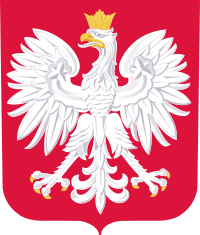Union of European Democrats
The Union of European Democrats (Polish: Unia Europejskich Demokratów, UED) is a centrist,[1] social-liberal[1] political party in Poland. The party was founded on 12 November 2016 following the merger of the Democratic Party – demokraci.pl structures of the association of European Democrats.[2] The name refers to the tradition of the Democratic Union and the Freedom Union, of which it is the successor. The party is generally characterised as socially liberal, with a moderate Christian democratic wing. The UED strongly emphasizes commitment to the values of the European Union.[2]
Union of European Democrats Unia Europejskich Demokratów | |
|---|---|
 | |
| Leader | Elżbieta Bińczycka |
| Founded | 12 November 2016 |
| Preceded by | Democratic Party – demokraci.pl |
| Ideology | Social liberalism Pro-Europeanism[1] |
| Political position | Centre[1] |
| National affiliation | Polish Coalition |
| Sejm | 1 / 460
|
| Senate | 1 / 100
|
| European Parliament | 0 / 52
|
| Sejmiks | 1 / 552
|
 |
|---|
| This article is part of a series on the politics and government of Poland |
|
|
Related topics
|
|
|
History
The extra-parliamentary Democratic Party merged with the European Democrats on 12 November 2016. The UED was led by the former Democratic Party president Elizabeth Bińczycka, with Jacek Protasiewicz serving as her Vice-President.[3] Former President Lech Wałęsa and the chairman of the Committee for the Defence of Democracy Mateusz Kijowski spoke at the party's founding conference, and letters were read from former presidents Bronislaw Komorowski and Aleksander Kwasniewski.[4]
For the 2019 election the party was starting from the Polish Coalition lists. Its member Jacek Protasiewicz was elected to the Sejm[5], while Michał Kamiński was elected to the Senate.[6]
UED MP, Jacek Protasiewicz sits in Parliamentary Assembly of the Council of Europe, as a member of European People's Party faction.
Programme
The party program declaration is concerned with the defense of Polish democracy, support for Poland's membership of the European Union and NATO, and the putative threats to Poland posed by Russia. The UED supports the creation of a federal Europe. The party also advocates civil service reform, the separation of church and state, and the introduction of civil partnerships.[7][8]
References
- Henningsen, Bernd; Etzold, Tobias; Hanne, Krister, eds. (15 September 2017). The Baltic Sea Region: A Comprehensive Guide: History, Politics, Culture and Economy of a European Role Model. Berliner Wissenschafts-Verlag. p. 353. ISBN 978-3-8305-1727-6.
- "European Democrats join with the Democratic Party". onet.pl. Retrieved 3 March 2017.
- "The leaders". Union of European Democrats. Retrieved 3 March 2017.
- "The new party on the Polish political scene - Union of European Democrats". wiadomosci.com. Retrieved 3 March 2017.
- https://sejmsenat2019.pkw.gov.pl/sejmsenat2019/pl/wyniki/sejm/okr/3
- https://sejmsenat2019.pkw.gov.pl/sejmsenat2019/pl/wyniki/senat/pl
- "Program Declaration". Union of European Democrats. Retrieved 3 March 2017.
- "The new party on the Polish political scene - Union of European Democrats". Union of European Democrats. Retrieved 3 March 2017.